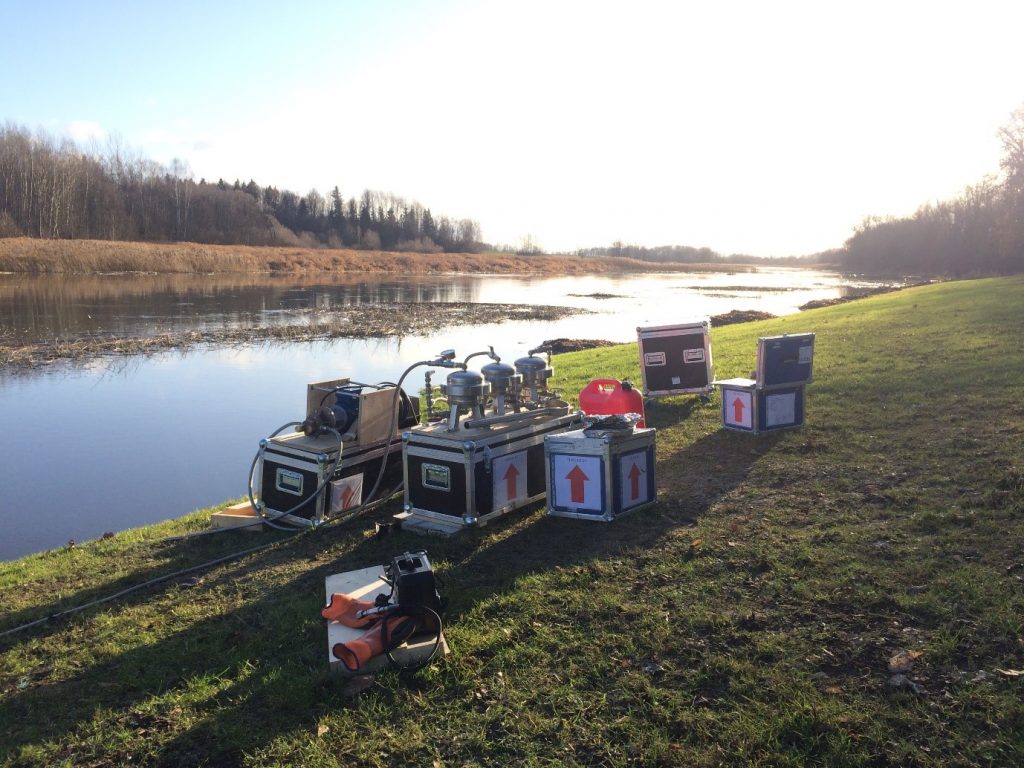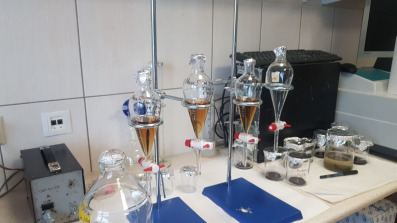Rivers – vectors for microplastics transport in marine environments?
Latvian Institute of Aquatic Ecology (LIAE) is studying microplastic in rivers.

UFO-system near one of the sampling sites
Until now research in litter and microplastics contamination was done mostly in marine systems. Rivers are important microplastics’ transport vectors into the marine environment, because the river current carries microplastics from farmlands, cities and wastewater treatment systems. (Barnes et al. 2009) So far wastewater treatment plants in Latvia are not designed for recognizing microplastics contamination and taking it out from the wastewater which is afterwards drained into the environment. (Flowers, 2016)

Sample preparation in laboratory. Density separation.
Aim of the current research in LIAE is to evaluate the amount, composition and prevalence of microplastic particles in Daugava and Lielupe rivers’ surface water. Last year four water samples from river Daugava and five water samples from river Lielupe were collected. In order to collect the samples Universal Filtering Object (UFO) was used (made in Aalborg University). The aim of the UFO-system is to filter the water through filters with different mesh sizes (5 mm, 300µm and 10µm). Limiting factors to collection of samples were either filtering one cubic meter of water or using max four 10µm filters in case they were clogged up. Further processing of samples was done in the laboratory. In the first step all the organic particles which could complicate the analysis of samples were removed. In order to understand the background contamination a 10µm metal filter was exposed to the environment at sampling sites.
Identification and visual analysis of microplastics particles (>500µm) was done using LEICA DM4000 B Led microscope with additional camera DFC 295 and software LeicaApplicationSuite V4.1. To identify polymers a Fourier-transform infrared spectroscopy (FTIR) method was used. Particles smaller than 500µm were sent to Aalborg University and identified using microFTIR.
Results indicate that particles in size range >500µm are in an abundant amount in all the sampling sites and most of them are classified as fibers. The results from Aalborg University are arriving soon.
